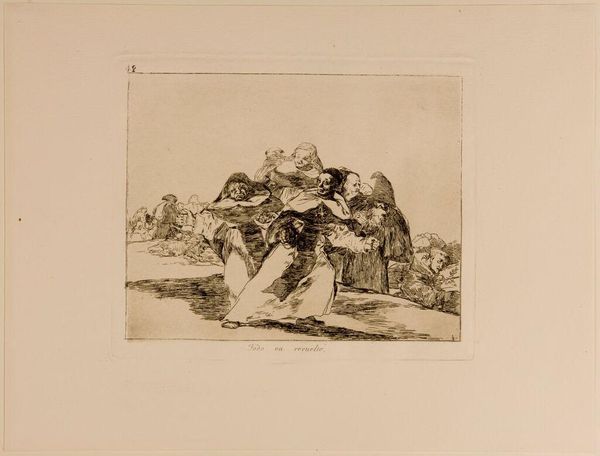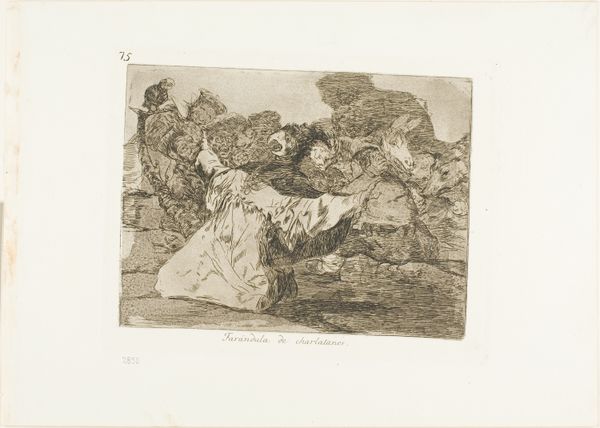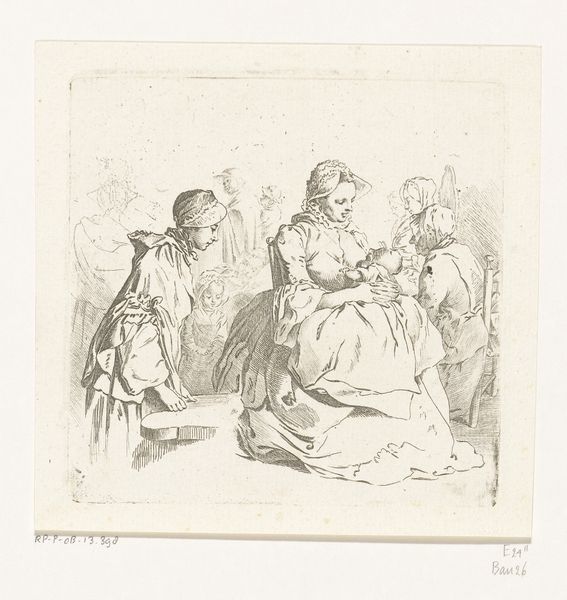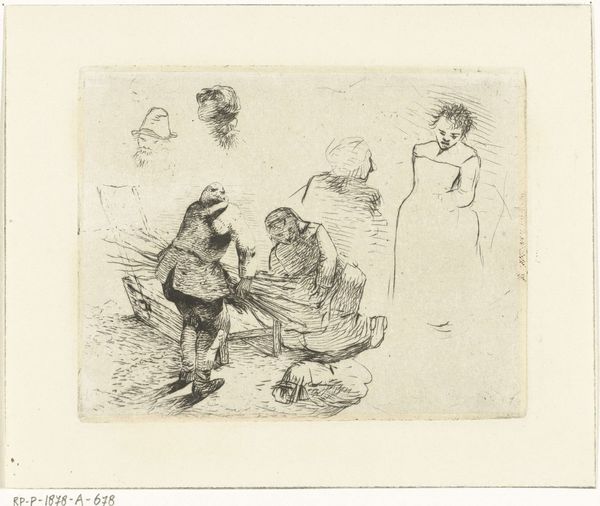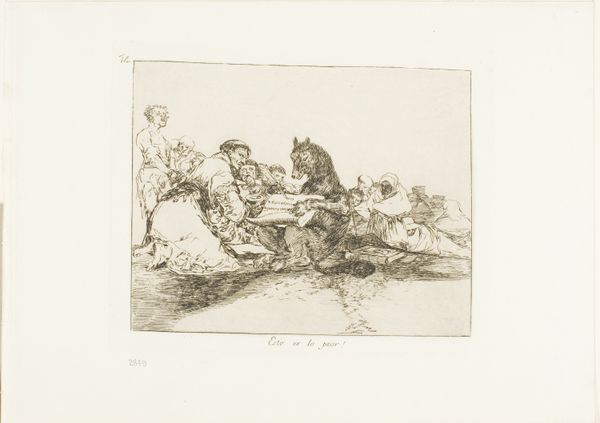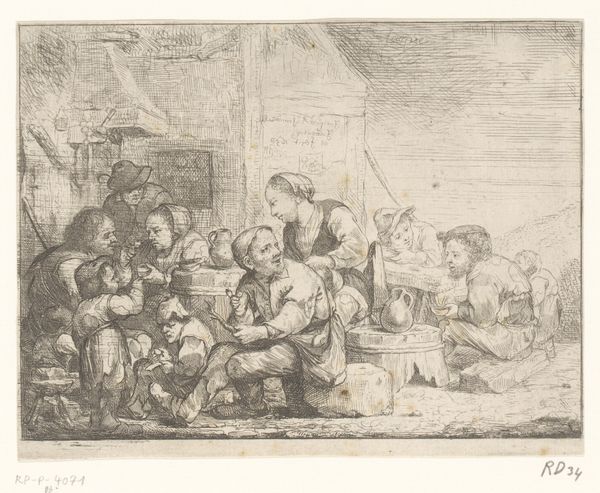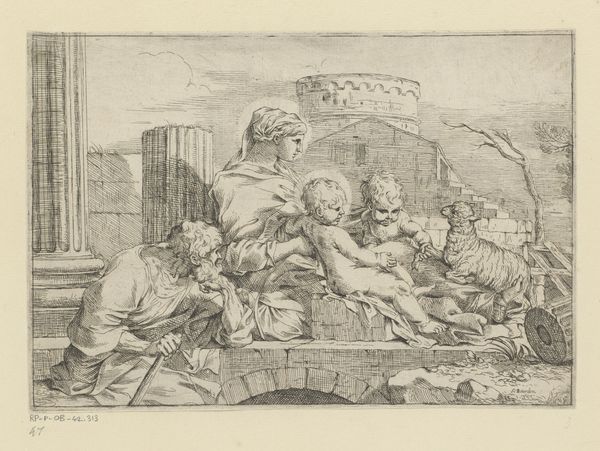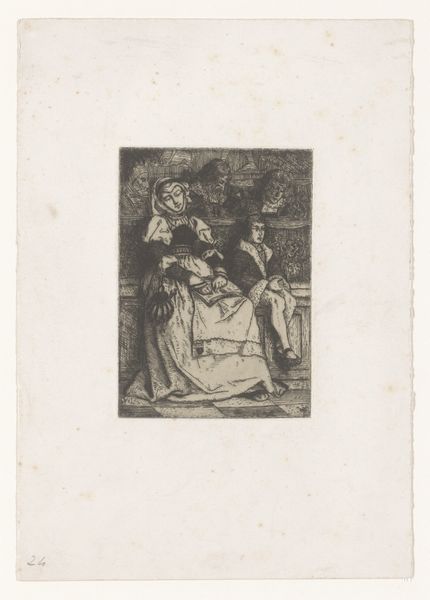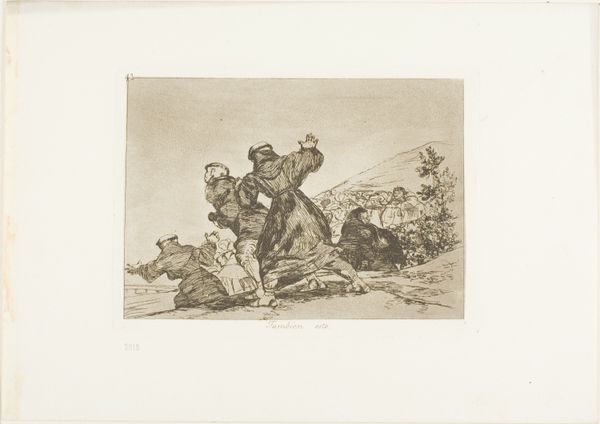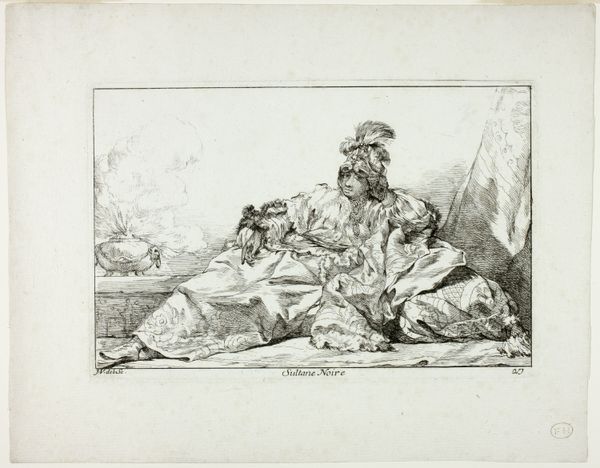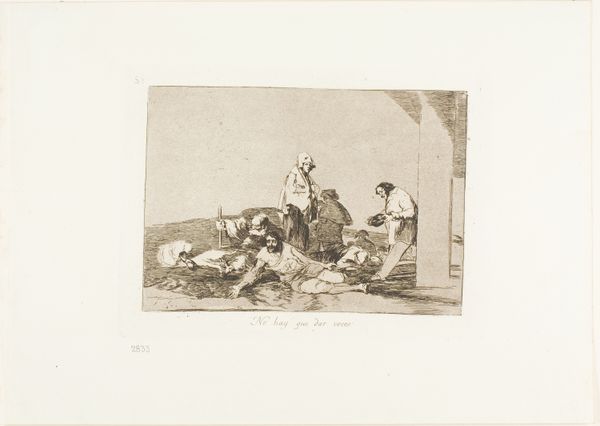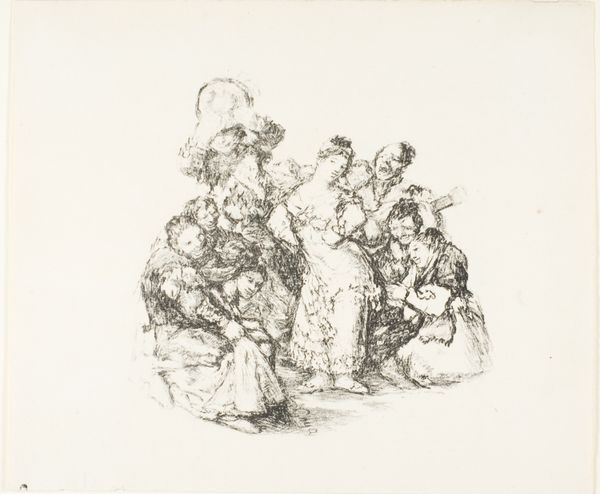
Everything is topsy-turvy, plate 42 from The Disasters of War Possibly 1815 - 1863
0:00
0:00
print, etching
#
narrative-art
# print
#
etching
#
romanticism
#
history-painting
Dimensions: 155 × 202 mm (image); 175 × 220 mm (plate); 240 × 340 mm (sheet)
Copyright: Public Domain
Editor: Looking at Goya’s etching, “Everything is topsy-turvy” from *The Disasters of War*, probably made between 1815 and 1863, I’m struck by the chaos, almost a carnivalesque inversion of order. What exactly am I looking at? Curator: You’re observing the brutal realities of war through Goya's critical lens. What appears "topsy-turvy" is a deliberate distortion of social structures. The print challenges the supposed order of society, especially in times of conflict. Consider how the figures are arranged – are they the powerful or the powerless? Editor: I see figures seemingly carrying others on their backs or shoulders, but they look miserable, and the ones being carried don't seem regal or victorious. More like burdened or…ill? Curator: Exactly. Goya is using visual language to critique the traditional hierarchies and power dynamics exposed and exacerbated during wartime. Who benefits from these inversions? Think about how Romanticism critiqued Enlightenment ideals. Do you see that at play here? Editor: I think so. Instead of reason and progress, we see this irrational, disturbing scene. It seems to be suggesting that war reduces everyone to a state of suffering, regardless of their social position. So Goya is using art to make a political point, challenging us to rethink power. Curator: Precisely. It questions the justifications for violence and the supposed heroism associated with war. What does this inversion reveal about the social contract? How might we interpret this image through a post-colonial lens, considering Spain’s imperial history? Editor: That's something I hadn't considered. Viewing it as a commentary on colonial power structures… I’ll need to reflect on that. Thank you, this has shifted my understanding quite a bit. Curator: My pleasure. Let's both keep interrogating the visual language artists use to critique the status quo. It is essential that we continue to do so!
Comments
No comments
Be the first to comment and join the conversation on the ultimate creative platform.

